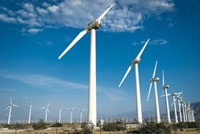Advertisement
Grab your lab coat. Let's get started
Welcome!
Welcome!
Create an account below to get 6 C&EN articles per month, receive newsletters and more - all free.
It seems this is your first time logging in online. Please enter the following information to continue.
As an ACS member you automatically get access to this site. All we need is few more details to create your reading experience.
Not you? Sign in with a different account.
Not you? Sign in with a different account.
ERROR 1
ERROR 1
ERROR 2
ERROR 2
ERROR 2
ERROR 2
ERROR 2
Password and Confirm password must match.
If you have an ACS member number, please enter it here so we can link this account to your membership. (optional)
ERROR 2
ACS values your privacy. By submitting your information, you are gaining access to C&EN and subscribing to our weekly newsletter. We use the information you provide to make your reading experience better, and we will never sell your data to third party members.
Environment
Ocean's carbon sink is filling up
May 21, 2007
| A version of this story appeared in
Volume 85, Issue 21
Oceans should absorb 70–80% of anthropogenic carbon dioxide released into the atmosphere, according to simple models based on well-known carbon chemistry and multicentury timescales. But new research shows that, since 1981, the body of water surrounding Antarctica, known as the Southern Ocean, has absorbed 30% less CO2 than predicted (Science, DOI: 10.1126/science.1136188). As ocean CO2 absorption weakens, atmospheric levels of the gas may rise faster and further impact climate. From 1981 to 2004, Corinne Le Quéré of the British Antarctic Survey and colleagues around the globe measured CO2 concentrations at a total of 40 stations, including 11 stations in the Southern Ocean. The team analyzed the data by two independent simulation methods. Both methods suggest the lower absorption is the result of human activities inducing changes to wind patterns in the region. The Southern Ocean is expected to continue absorbing atmospheric CO2 over the next 25 years, the researchers write, but the fraction that can be absorbed will continue to decrease if winds continue to increase.




Join the conversation
Contact the reporter
Submit a Letter to the Editor for publication
Engage with us on Twitter